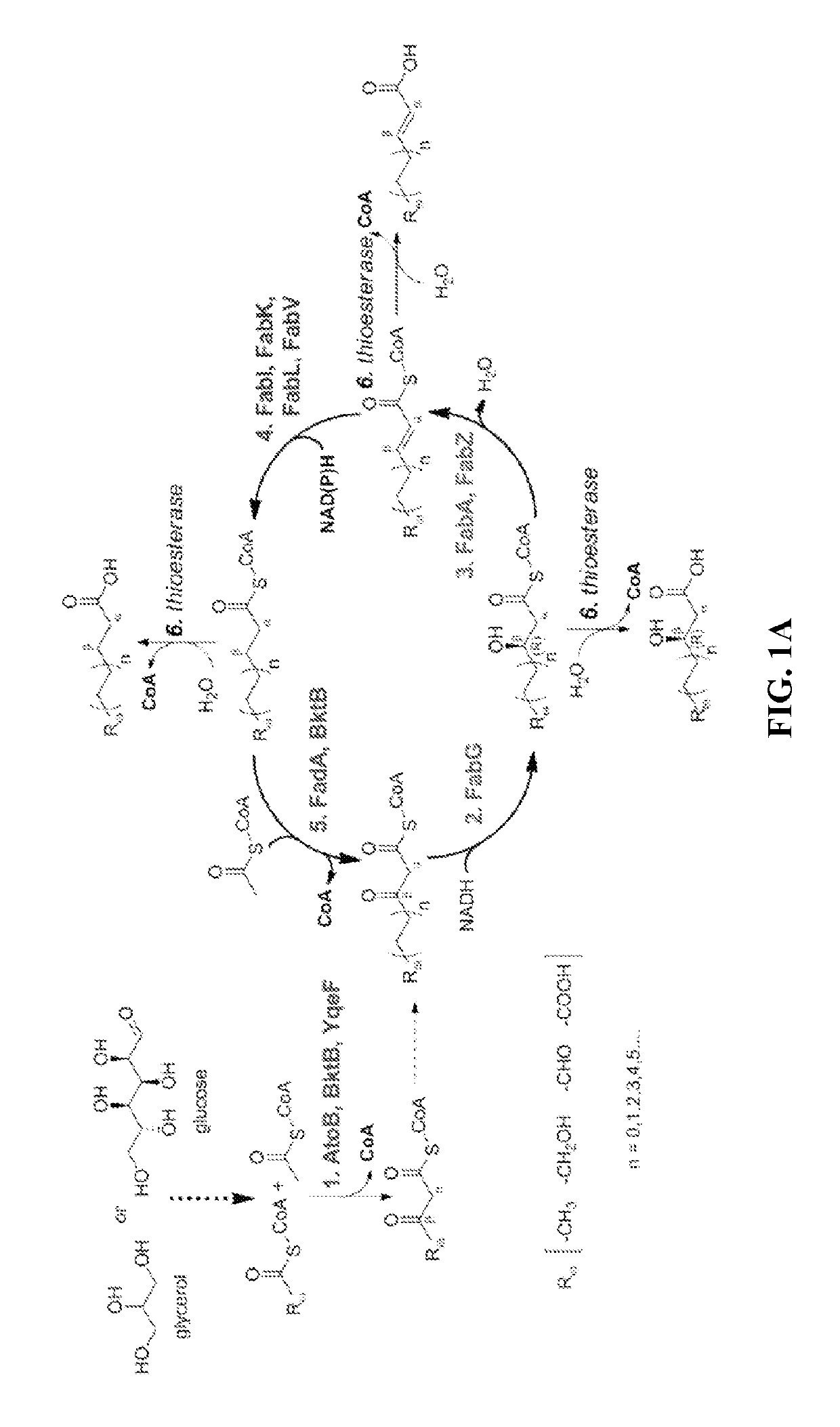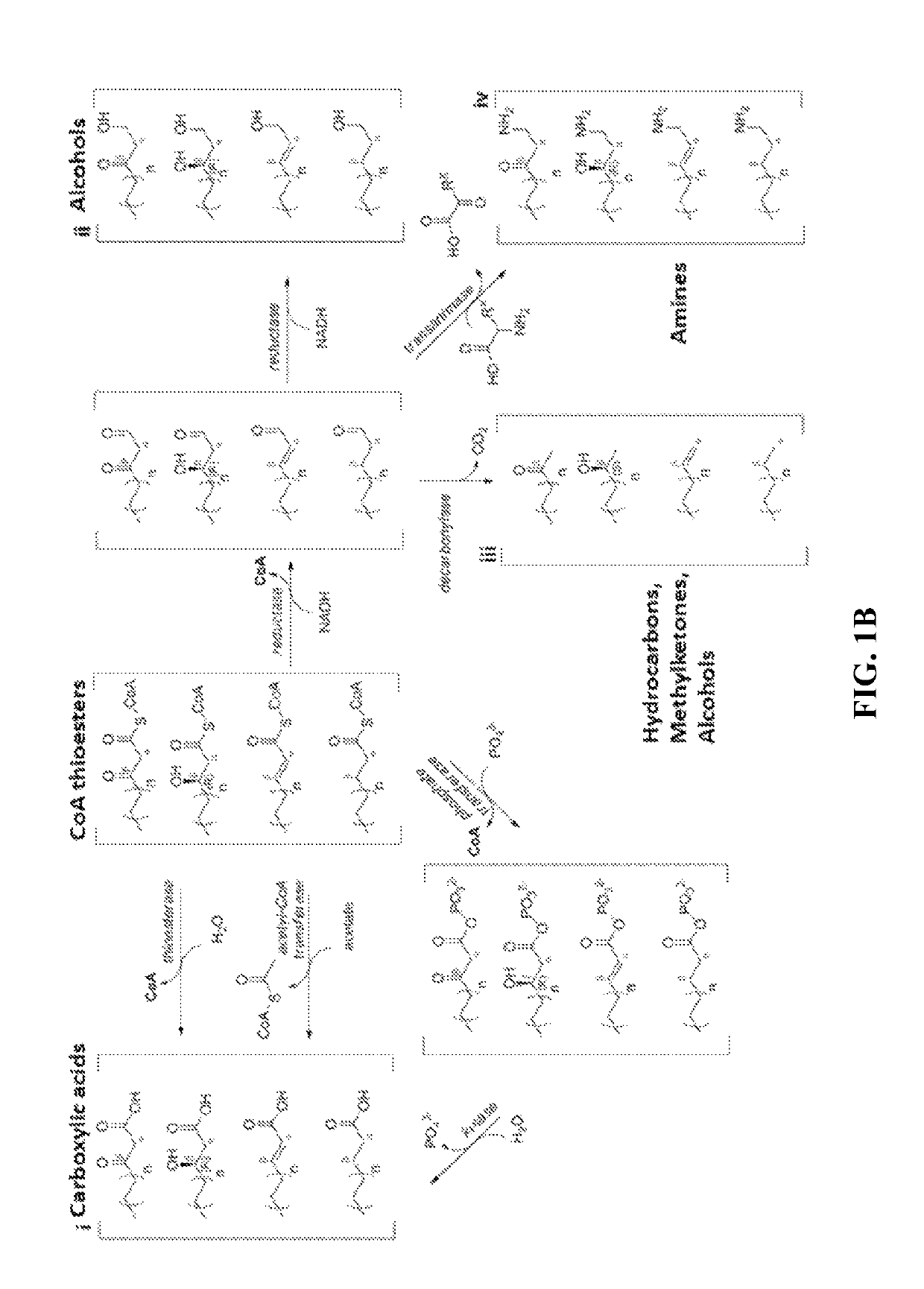Type II fatty acid synthesis enzymes in reverse β-oxidation
a fatty acid synthesis and reverse -oxidation technology, applied in the microorganism field, can solve the problems of limiting cell growth and hydrocarbon and other product production, low atp yield associated with the production of hydrocarbon through the fatty acid synthesis pathway, and inefficient operation of this pathway
- Summary
- Abstract
- Description
- Claims
- Application Information
AI Technical Summary
Benefits of technology
Problems solved by technology
Method used
Image
Examples
Embodiment Construction
[0065]The technology herein is based on developing an alternative strategy to the efficient production of α-, β-, and ω-functionalized carboxylic acids, alcohols, hydrocarbons, and amines that focuses on the use of type II fatty acid biosynthesis pathway genes / enzymes in E. coli and S. cerevisiae (as examples) to assemble a functional reversal of the β-oxidation cycle by combining these type II fatty acid biosynthesis enzymes with the non-decarboxylating condensation reaction catalyzed by thiolases. However, these pathways are ubiquitous, and any type II FAS enzyme from any species can be used.
[0066]Technologies developed prior to this are based on the native version of the FAS pathway, which uses a decarboxylative condensation step catalyzed by keto-acyl-ACP / CoA synthases. However, the operation of this pathway is less efficient because it consumes ATP in the synthesis of malonyl-ACP, which is the donor of two-carbon units for chain elongation / decarboxylating condensation reaction....
PUM
| Property | Measurement | Unit |
|---|---|---|
| pH | aaaaa | aaaaa |
| concentrations | aaaaa | aaaaa |
| concentrations | aaaaa | aaaaa |
Abstract
Description
Claims
Application Information
 Login to View More
Login to View More - R&D
- Intellectual Property
- Life Sciences
- Materials
- Tech Scout
- Unparalleled Data Quality
- Higher Quality Content
- 60% Fewer Hallucinations
Browse by: Latest US Patents, China's latest patents, Technical Efficacy Thesaurus, Application Domain, Technology Topic, Popular Technical Reports.
© 2025 PatSnap. All rights reserved.Legal|Privacy policy|Modern Slavery Act Transparency Statement|Sitemap|About US| Contact US: help@patsnap.com



